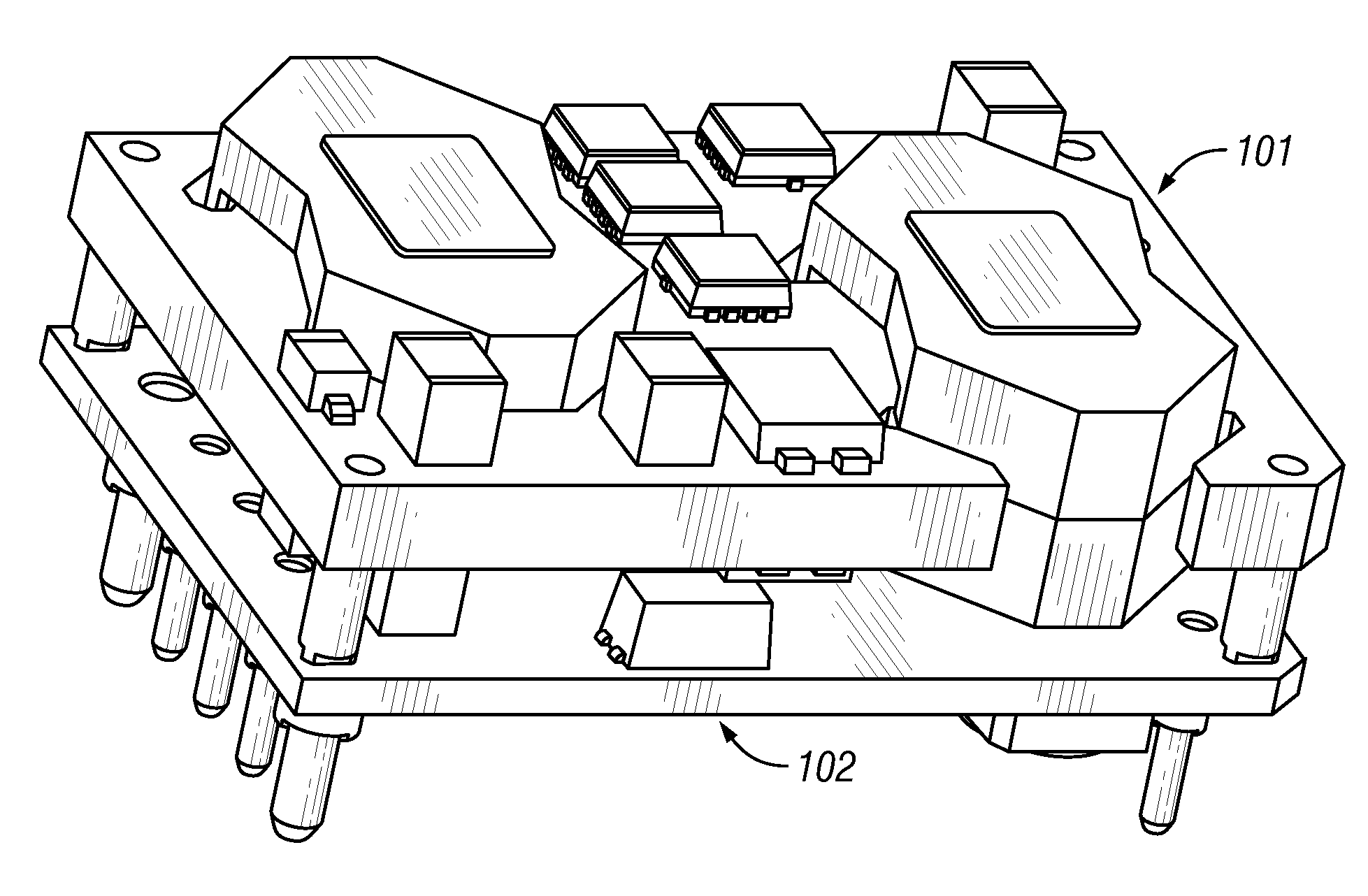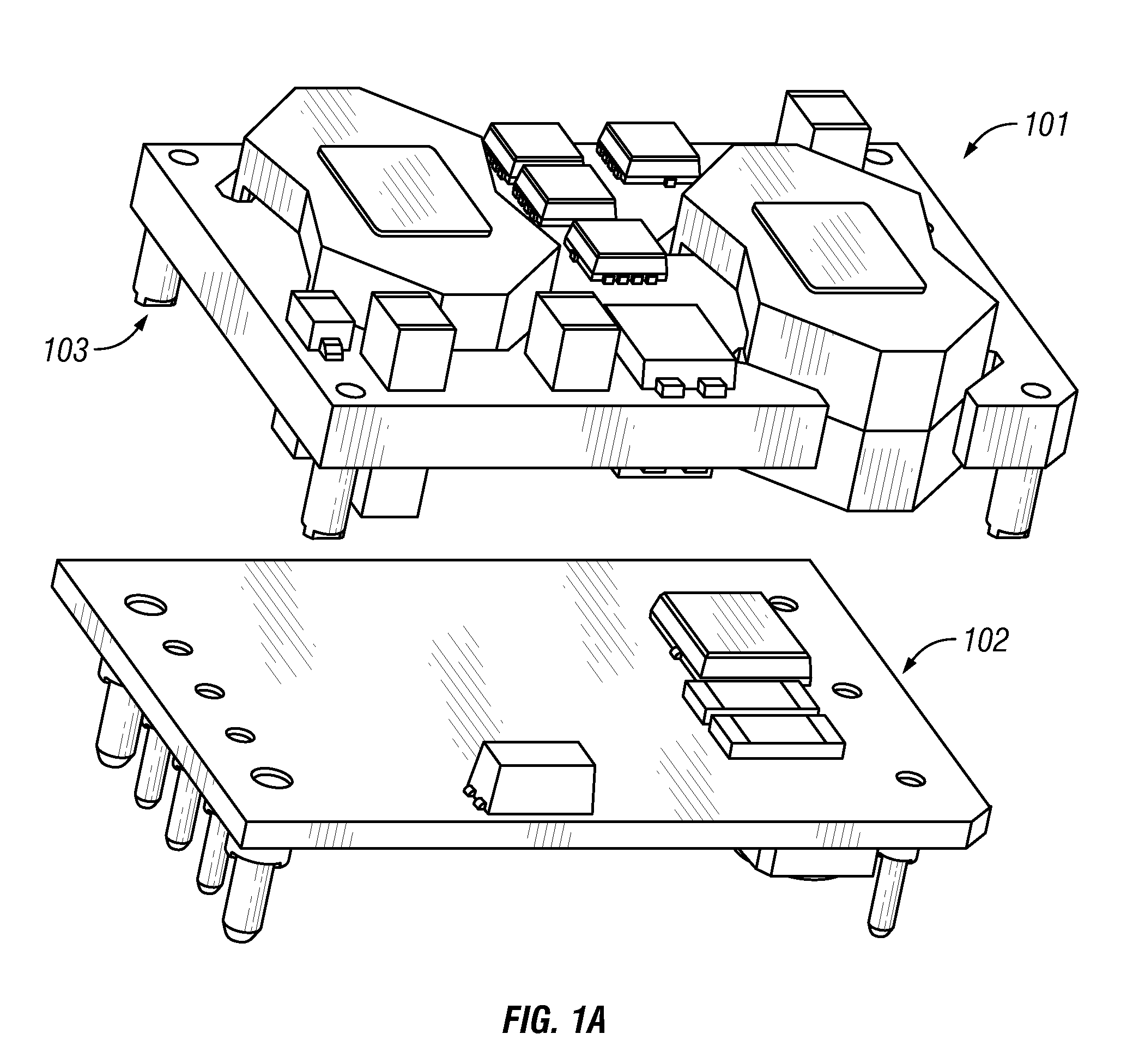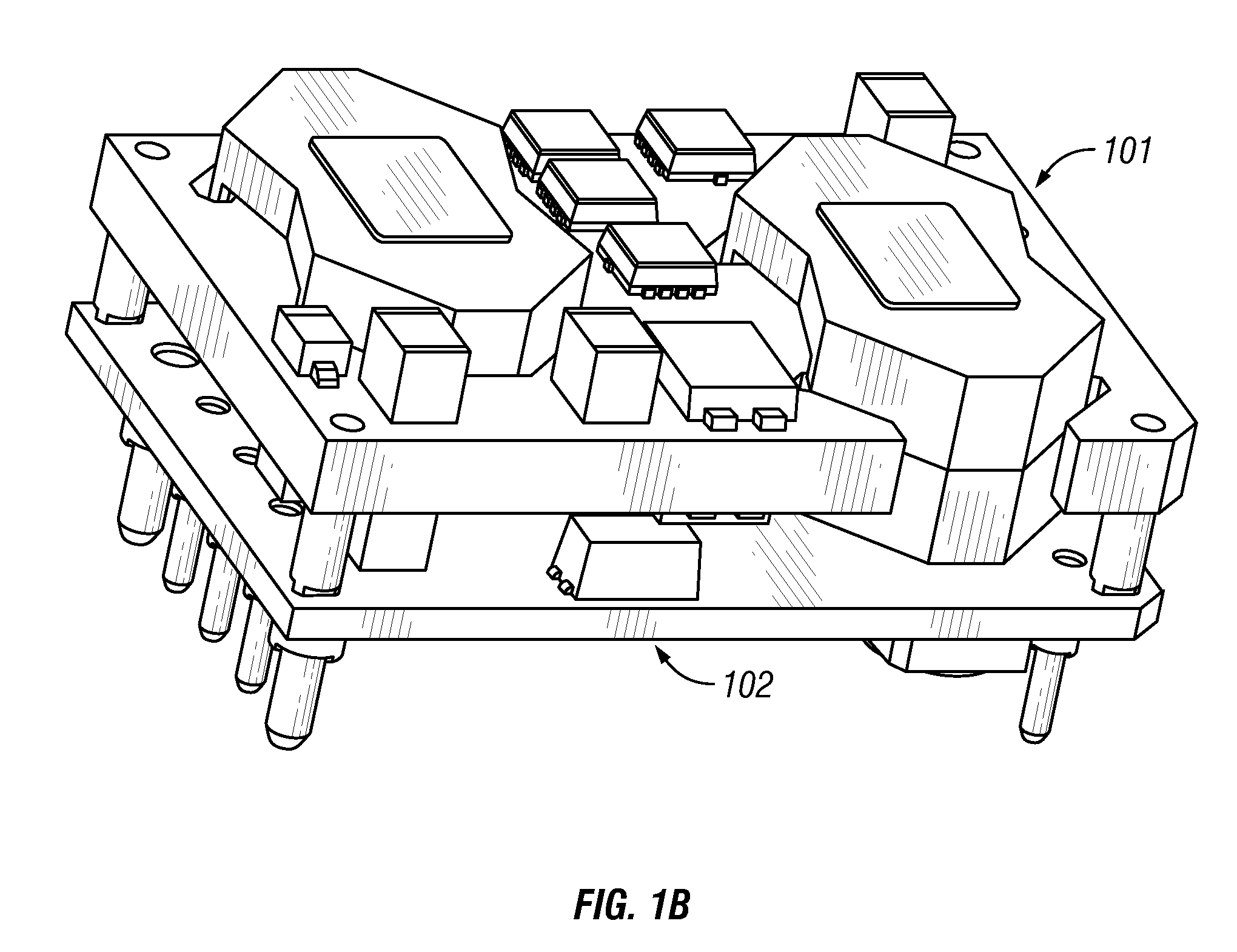Multiple-board power converter
a power converter and multi-board technology, applied in the direction of printed circuit aspects, electrical apparatus construction details, stacked spaced pcbs, etc., can solve the problems of reducing the available board area for mounting components, and reducing the thermal isolation of sensitive components
- Summary
- Abstract
- Description
- Claims
- Application Information
AI Technical Summary
Benefits of technology
Problems solved by technology
Method used
Image
Examples
Embodiment Construction
[0017]FIG. 1A shows a top perspective exploded view of a DC-DC power converter in accordance with a preferred embodiment of the present invention. FIG. 1B is a top perspective view of the assembled power converter. For ease of illustration, the example power converter shown in the figures comprises two multi-layer Printed Wiring Boards 101, 102 parallel to each other, connected by several interconnect pins. However, it should be emphasized that the present invention is not limited to two PWBs in parallel.
[0018]The open frame design allows airflow between the boards, increasing the surface area available for mounting components, and the parallel configuration allows fresh airflow to cool components regardless of the orientation of the power converter.
[0019]FIG. 1C is a bottom perspective exploded view of the power converter, and FIG. 1D is a bottom perspective view of the assembled power converter. As can be seen in FIGS. 1A-1D, unlike prior art power converter configurations, the pr...
PUM
 Login to View More
Login to View More Abstract
Description
Claims
Application Information
 Login to View More
Login to View More - R&D
- Intellectual Property
- Life Sciences
- Materials
- Tech Scout
- Unparalleled Data Quality
- Higher Quality Content
- 60% Fewer Hallucinations
Browse by: Latest US Patents, China's latest patents, Technical Efficacy Thesaurus, Application Domain, Technology Topic, Popular Technical Reports.
© 2025 PatSnap. All rights reserved.Legal|Privacy policy|Modern Slavery Act Transparency Statement|Sitemap|About US| Contact US: help@patsnap.com



